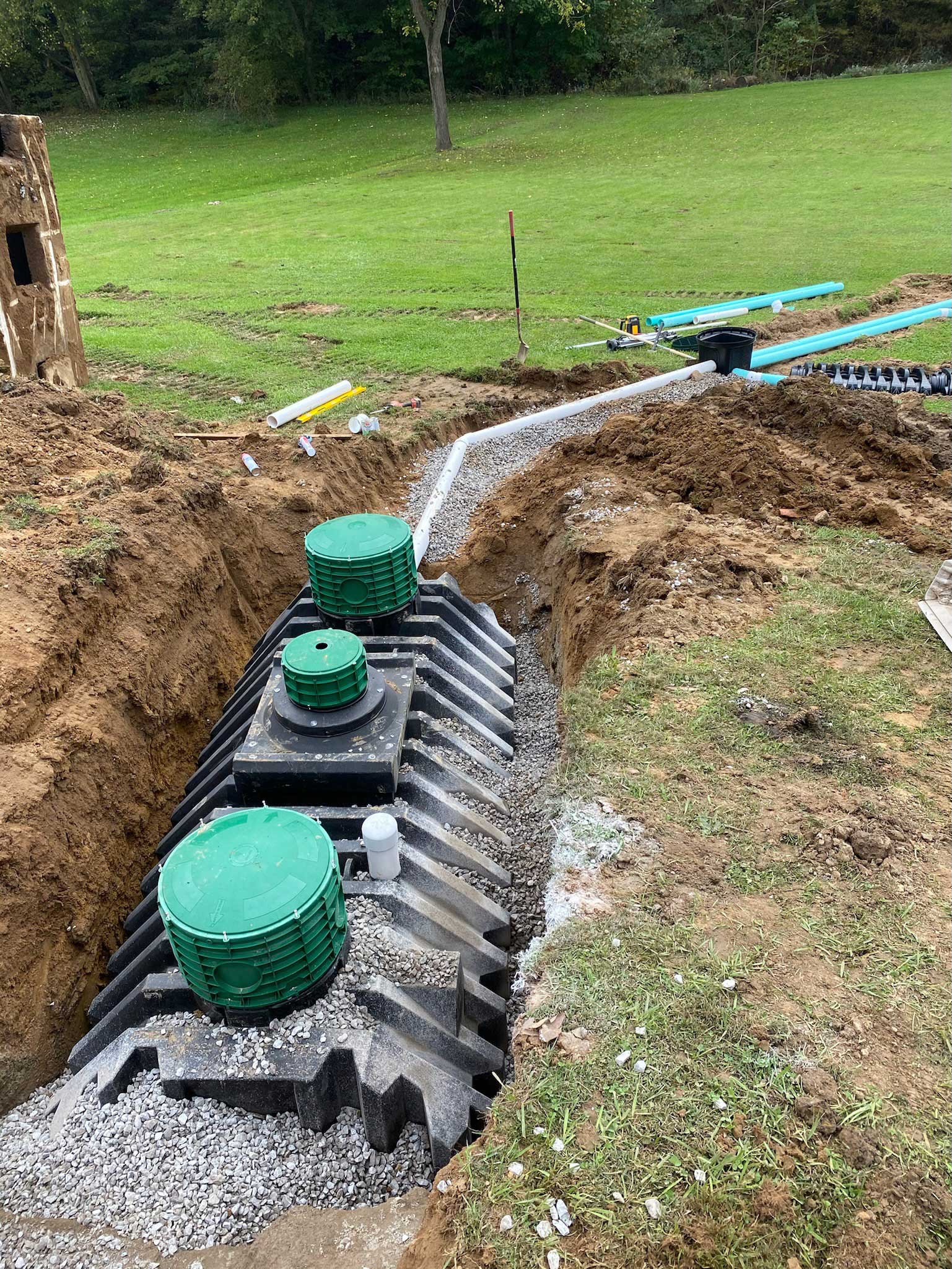Septic Ohio - Comprehensive Septic System Providers in Ohio
Septic Ohio - Comprehensive Septic System Providers in Ohio
Blog Article
Comprehensive Excavation Approaches: Understanding the Basics for Success
In the realm of building and construction and civil engineering, the value of effective excavation methods can not be overemphasized. The careful planning, exact implementation, and precise interest to information required in excavation projects demand a thorough approach that includes numerous essential aspects. From preliminary soil analysis to the application of safety procedures and regular progress surveillance, grasping these core aspects is vital for attaining success in any type of excavation undertaking. Nevertheless, the true mastery exists not merely in comprehending these principles yet in perfectly integrating them to navigate the intricacies of excavation projects with skill.
Recognizing Excavation Task Preparation

Successful excavation jobs are improved the structure of meticulous and detailed preparation. The initial stage of any type of excavation job is the drawing board, where critical choices are made that can considerably influence the outcome of the job. During this stage, it is important to collect all pertinent info concerning the site, including topographical studies, soil structure, and any kind of potential threats that may exist. Recognizing the project spending plan, timeline, and scope restrictions is critical for creating a detailed excavation strategy that ensures the project's success.
One trick aspect of excavation project preparation is the growth of a detailed timeline that outlines the sequence of turning points, due dates, and activities. This timeline functions as a roadmap for the job team, allowing them to track progression and make needed modifications to guarantee the project remains on routine. Additionally, a distinct spending plan that accounts for all expenses, consisting of equipment rental, labor prices, and products, is necessary for preventing cost overruns and hold-ups. By meticulously thinking about all these elements during the preparation stage, excavation tasks can be carried out effectively and effectively, bring about successful results.
Soil Evaluation and Website Assessment
Performing comprehensive dirt evaluation and site analysis is a vital action in the preparation phase of any type of excavation job. Dirt evaluation involves figuring out the structure, structure, and homes of the dirt at the excavation website. This details is important for comprehending the dirt's bearing ability, dampness material, and capacity for disintegration, which are vital factors in identifying the excavation methods and tools needed for the project.
Site evaluation exceeds soil analysis and encompasses a wider evaluation of the overall site conditions. This evaluation consists of identifying any type of potential dangers, such as below ground utilities, environmental worries, or unsteady surface, that could impact the excavation process. By extensively evaluating the site, project supervisors can create reliable excavation methods that prioritize safety and security, efficiency, and environmental management.
Using sophisticated innovations like ground-penetrating radar, dirt sampling, and drone studies can boost the precision and effectiveness of soil evaluation and website assessment. Investing time and resources in these preliminary steps can inevitably conserve time and prevent expensive hold-ups or difficulties during the excavation why not check here procedure.
Tools Selection and Application
Efficient excavation tasks rely heavily on calculated equipment option and use to guarantee ideal performance and performance. Choosing the ideal devices for the work is critical in optimizing efficiency and decreasing downtime. Variables such as the sort of dirt, deepness of excavation, and task range play a considerable role in figuring out the most ideal devices for the job handy.

In enhancement to picking the appropriate devices, proper application is essential to task success. Operators has to be trained to handle the tools securely and efficiently - lancaster trenching. Regular maintenance checks and prompt fixings aid protect against breakdowns and guarantee regular efficiency throughout the task
Security Steps and Regulations Compliance
In the realm of excavation tasks, focusing on security actions and compliance with policies is paramount to ensuring a secure and legally audio operational setting. Security measures encompass an array of practices, consisting of performing thorough website assessments, implementing appropriate signage and barriers, and offering sufficient security training for all personnel associated with the excavation procedure. Adherence to policies, such as OSHA demands in the USA, makes certain that the excavation project meets the required criteria to shield workers, onlookers, and the surrounding environment.

Monitoring Progress and Adjusting Techniques
Just how can project supervisors efficiently track the advancement of excavation tasks and adapt their approaches accordingly to enhance results? Tracking progression is important for guaranteeing that excavation jobs remain on track and fulfill target dates. Project next page supervisors can utilize numerous tools and techniques to track progress, such as everyday report card, regular website assessments, and advanced monitoring modern technologies like drones and GPS tracking systems. By constantly monitoring the project's development, supervisors can recognize any kind of potential delays or concerns early on and take proactive steps to resolve them.

Conclusion
To conclude, mastering the fundamentals of detailed excavation methods is essential for the success of any type of job. By recognizing project planning, evaluating soil and site conditions, picking proper equipment, adhering to security laws, and keeping an eye on progress, job supervisors can ensure a reliable and smooth excavation procedure. Executing these methods will certainly bring about successful end results and lessen prospective dangers or obstacles throughout the excavation job.
The initial stage of any excavation task is the planning stage, where essential choices are made that can considerably impact the result of the project. Comprehending the project range, budget plan, and timeline restrictions is vital for producing a thorough excavation strategy that guarantees the task's success.
Exactly how can forecast managers successfully track the innovation of excavation jobs and adjust their strategies as necessary to optimize outcomes? By carefully keeping an eye on development and being ready to adjust methods, job supervisors can boost the total success of excavation tasks.
By recognizing task preparation, analyzing dirt and website problems, choosing ideal devices, complying with security laws, and keeping an eye on progression, job managers can guarantee a smooth and efficient excavation procedure.
Report this page